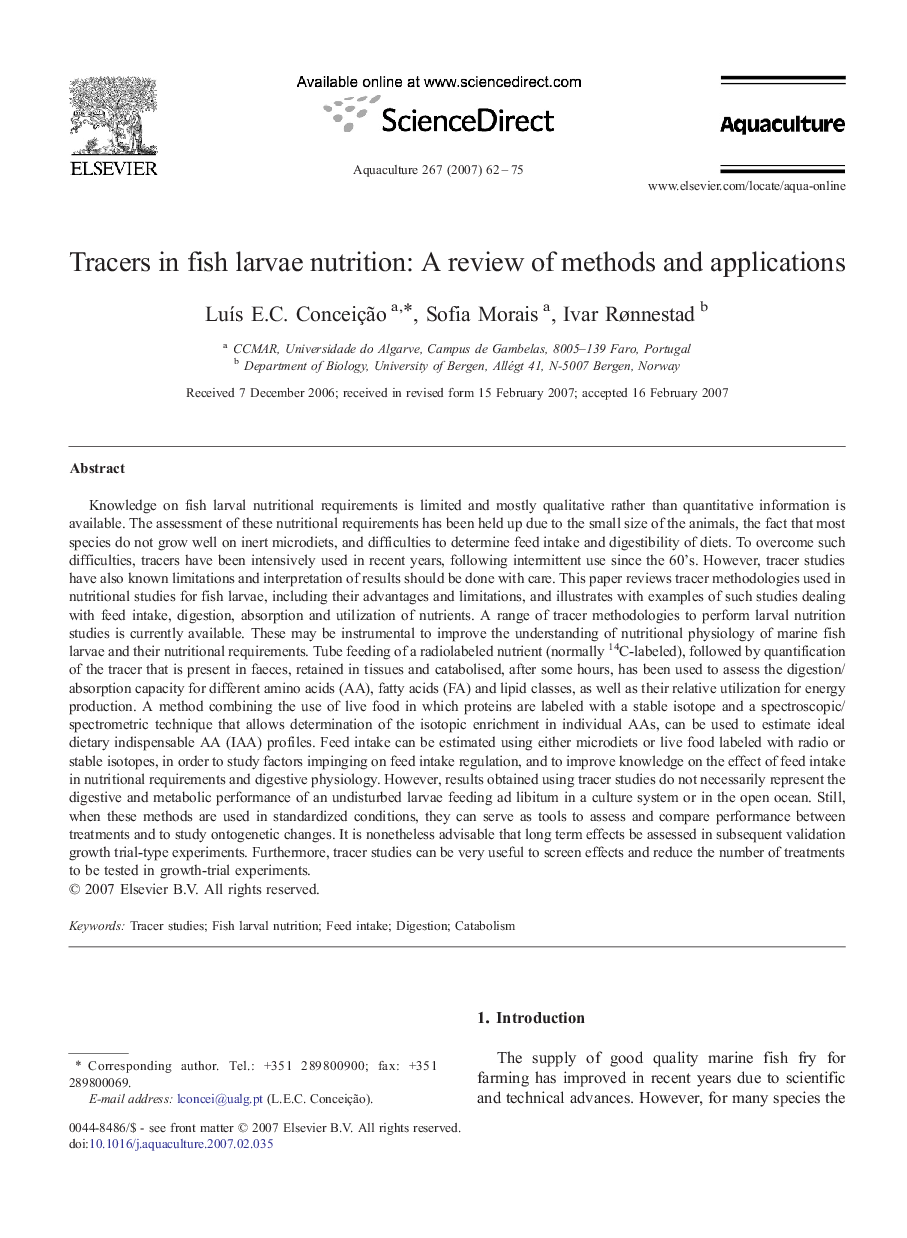| کد مقاله | کد نشریه | سال انتشار | مقاله انگلیسی | نسخه تمام متن |
|---|---|---|---|---|
| 2425463 | 1552975 | 2007 | 14 صفحه PDF | دانلود رایگان |

Knowledge on fish larval nutritional requirements is limited and mostly qualitative rather than quantitative information is available. The assessment of these nutritional requirements has been held up due to the small size of the animals, the fact that most species do not grow well on inert microdiets, and difficulties to determine feed intake and digestibility of diets. To overcome such difficulties, tracers have been intensively used in recent years, following intermittent use since the 60's. However, tracer studies have also known limitations and interpretation of results should be done with care. This paper reviews tracer methodologies used in nutritional studies for fish larvae, including their advantages and limitations, and illustrates with examples of such studies dealing with feed intake, digestion, absorption and utilization of nutrients. A range of tracer methodologies to perform larval nutrition studies is currently available. These may be instrumental to improve the understanding of nutritional physiology of marine fish larvae and their nutritional requirements. Tube feeding of a radiolabeled nutrient (normally 14C-labeled), followed by quantification of the tracer that is present in faeces, retained in tissues and catabolised, after some hours, has been used to assess the digestion/absorption capacity for different amino acids (AA), fatty acids (FA) and lipid classes, as well as their relative utilization for energy production. A method combining the use of live food in which proteins are labeled with a stable isotope and a spectroscopic/spectrometric technique that allows determination of the isotopic enrichment in individual AAs, can be used to estimate ideal dietary indispensable AA (IAA) profiles. Feed intake can be estimated using either microdiets or live food labeled with radio or stable isotopes, in order to study factors impinging on feed intake regulation, and to improve knowledge on the effect of feed intake in nutritional requirements and digestive physiology. However, results obtained using tracer studies do not necessarily represent the digestive and metabolic performance of an undisturbed larvae feeding ad libitum in a culture system or in the open ocean. Still, when these methods are used in standardized conditions, they can serve as tools to assess and compare performance between treatments and to study ontogenetic changes. It is nonetheless advisable that long term effects be assessed in subsequent validation growth trial-type experiments. Furthermore, tracer studies can be very useful to screen effects and reduce the number of treatments to be tested in growth-trial experiments.
Journal: Aquaculture - Volume 267, Issues 1–4, 3 July 2007, Pages 62–75